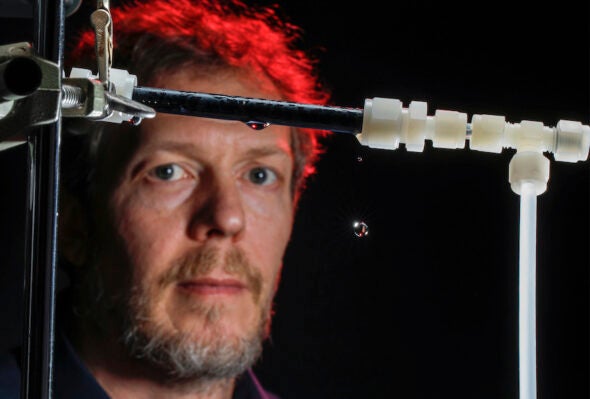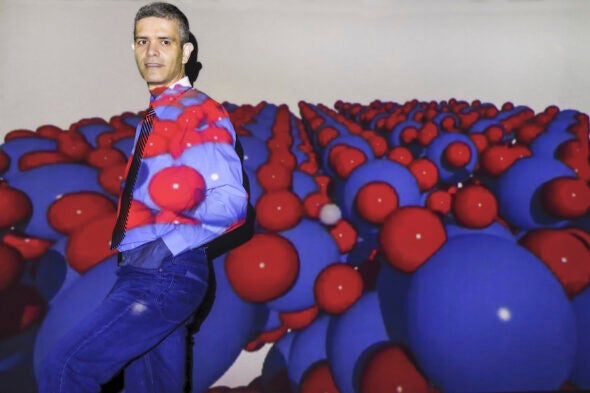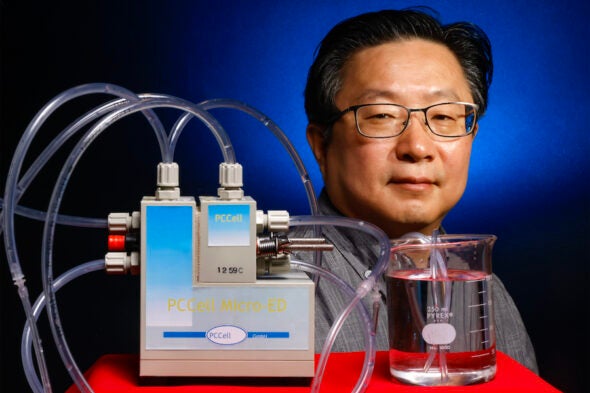UIC engineers finding new ways to remove contaminants from water
University of Illinois Chicago engineers will explore novel technologies for removing hazardous chemicals from water, thanks to a grant from the National Science Foundation Great Lakes Water Innovation Engine.
The project will help create new electrochemical and filtration methods to capture and destroy perfluoroalkyl and polyfluoroalkyl substances, commonly known as PFAS. These pollutants often are called “forever chemicals” because they don’t break down in water and remain for long periods in the environment without degrading.
After decades of use in consumer goods and industrial processes, PFAS chemicals are still detected in water and soil around the world today. They’ve been linked to negative health effects including decreased fertility and increased risk of cancer.
The two-year, $865,000 grant will fund UIC College of Engineering research led by Brian Chaplin, Sangil Kim and Shafigh Mehraeen. It’s one of the first grants issued from the federal agency’s Great Lakes ReNEW program, a collaboration of over 50 research partners from the Midwest funded by up to $160 million from the National Science Foundation. In the project, UIC engineers will collaborate with researchers from Purdue University and Argonne National Laboratory.
“The real focus here is on accelerating the technology,” said Chaplin, professor of chemical engineering. “We will use a combination of experiments, computation and theory to discover and test materials that may be good for PFAS destruction.”

(Photo: Jim Young/UIC Engineering)

(Photo: Jim Young/UIC Engineering)

(Photo: Jim Young/UIC Engineering)
In the project’s first phase, Chaplin and Mehraeen will use computer models to rapidly screen electrocatalysts that can capture PFAS chemicals and break them down into nontoxic components. The research builds on previous work by Chaplin and UIC colleagues that found new methods for eliminating PFAS and deployed them in industrial and municipal wastewater systems.
“The goal of computational simulation is to accelerate material design,” said Mehraeen, associate professor of chemical engineering. “With computational simulation and machine learning, we try to narrow down from millions of options and provide a handful of possibilities to the experimental team to design, fabricate and test.”
A second phase of the project — co-led by Chaplin and Kim, associate professor of chemical engineering — will develop a standardized platform to compare these technologies under controlled laboratory conditions. The hope is that this platform will accelerate wide adoption of new technologies developed under the Great Lakes program. Because both industrial and research laboratories are independently developing new materials to filter and destroy PFAS chemicals, a common testbed is needed to test and identify the most promising solutions.
“One impediment to commercialization of new technologies is having a uniform system to evaluate different technologies against each other,” Chaplin said. “Our hope is that we can test commercial membranes against the new membranes that are developed within the center and have an apples-to-apples comparison to encourage faster adoption.”
In addition to the scientific benefits, the project will address the workforce-development goals of the National Science Foundation initiative, Chaplin said.
“This center and these projects allow students and postdocs from UIC and the other institutions to receive an interdisciplinary education,” Chaplin said. “It broadens their horizons about the amazing facilities available and about working with different researchers who have different points of view and different backgrounds. Ultimately, that’s going to really help the students and position them well for jobs.”
